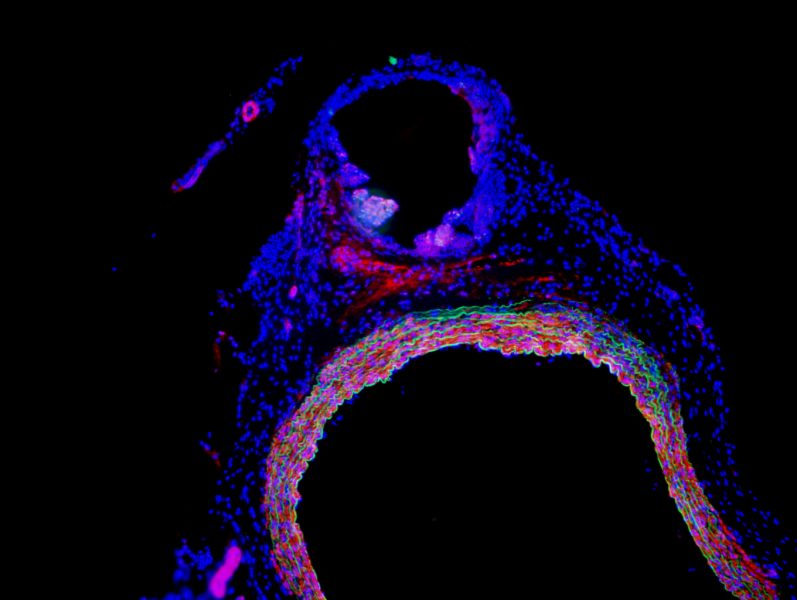
Jeremy Goldman and Roger Guillory generously shared their knowledge on Husky Bites, a free, interactive Zoom webinar hosted by Dean Janet Callahan. Here’s the link to watch a recording of his session on YouTube. Get the full scoop, including a listing of all the (60+) sessions at mtu.edu/huskybites.
What are you doing for supper this Monday night 2/1 at 6 ET? Grab a bite with Dean Janet Callahan and Biomedical Engineering Professor Jeremy Goldman. He’ll explain why traditional cardiac stents need an upgrade, and how zinc alloys may be part of the solution.
Also joining in will be Biomedical Engineering Assistant Professor Roger Guillory, one of Goldman’s former students at Michigan Tech. He grew up in Houston, Texas, then earned his BS, MS, and PhD in Biomedical Engineering at Michigan Tech, working in Goldman’s research lab all the while. He returned to Tech last year as a faculty member.
Every year, more than 900,000 Americans will have a heart attack. To reduce the chance of having a heart attack in the first place, or preventing another one from happening, a permanent stent, a small expandable metal tube, is implanted in a coronary artery.
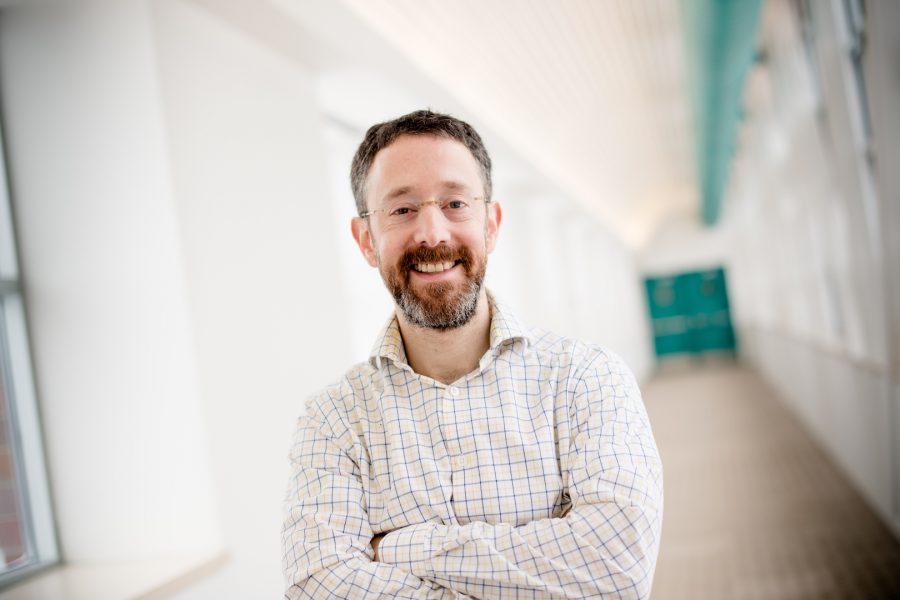
These tiny mesh tubes prop open blood vessels that are healing from procedures like balloon angioplasty. After about six months, most damaged arteries are healed and stay open on their own. The stent, however, is there for a lifetime.
But stents can be harmful later on. The tiny metal segments that make up the stent can break and end up poking the arterial wall in the heart. They may cause blood clots or inflammation. The stent itself begins to create more problems than it solves.
Goldman, his team of students and his research partners at Michigan Tech are the minds behind a smarter stent that gradually—and harmlessly—dissolves after the blood vessel is healed. “You could have all the early beneficial characteristics, but none of the harmful later ones, and you’d be left with a natural artery,” says Goldman.
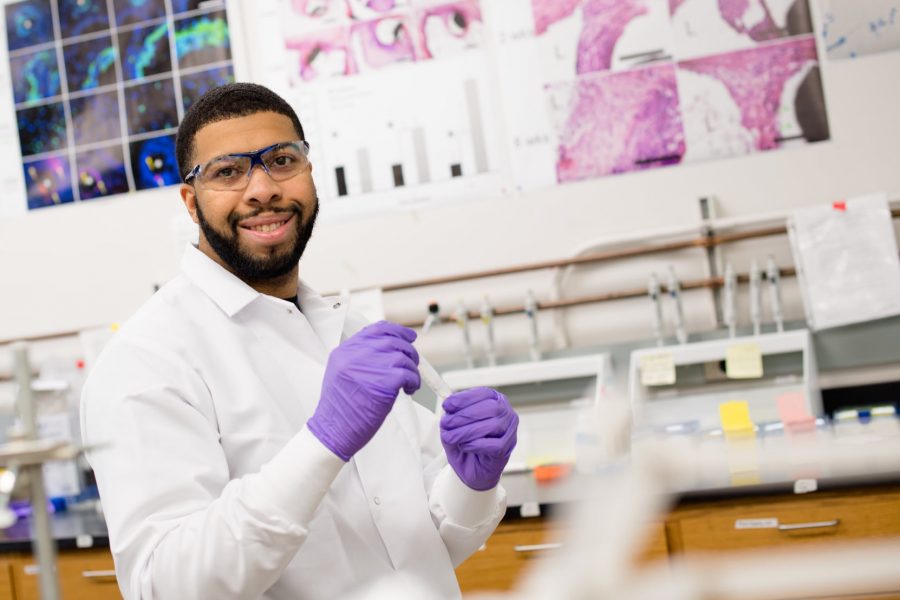
“Ours is a zinc-based bioabsorbable stent,” he explains. “Zinc works better and with fewer side effects than iron or magnesium, the materials most studied for stents,” Goldman explains.
“Pure zinc isn’t strong enough to make a stent that will hold an artery open as it heals, so we did additional experiments. Those studies suggest alloying zinc with other materials could propel the research over that hurdle.”
The team performed biocompatibility studies of zinc’s breakdown products and is now testing stents made from the most promising zinc alloys to understand how those stents might work in a human body.
“So far, our bioabsorbable zinc alloy metal harmlessly erodes within the desired timeframe, 1-2 years. It really has demonstrated superiority to current materials,” says Goldman.
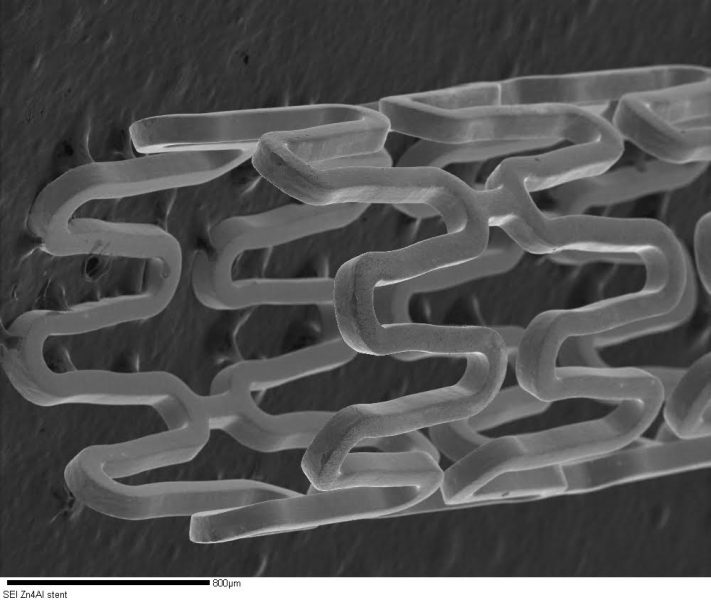
As a first year student at Michigan Tech, Guillory first read about Goldman’s research on the Michigan Tech website, and then went to see him after hearing him speak at a first-year seminar class. Goldman soon offered Guillory a job in his lab.
Guillory started out by performing histological analysis—cutting extremely thin cross-sections of an extracted artery (around 10 micrometers) frozen in liquid nitrogen in a machine called a cryostat. After obtaining these tiny cross sections, he stained them, looked at them with a light microscope, and interpreted the data.
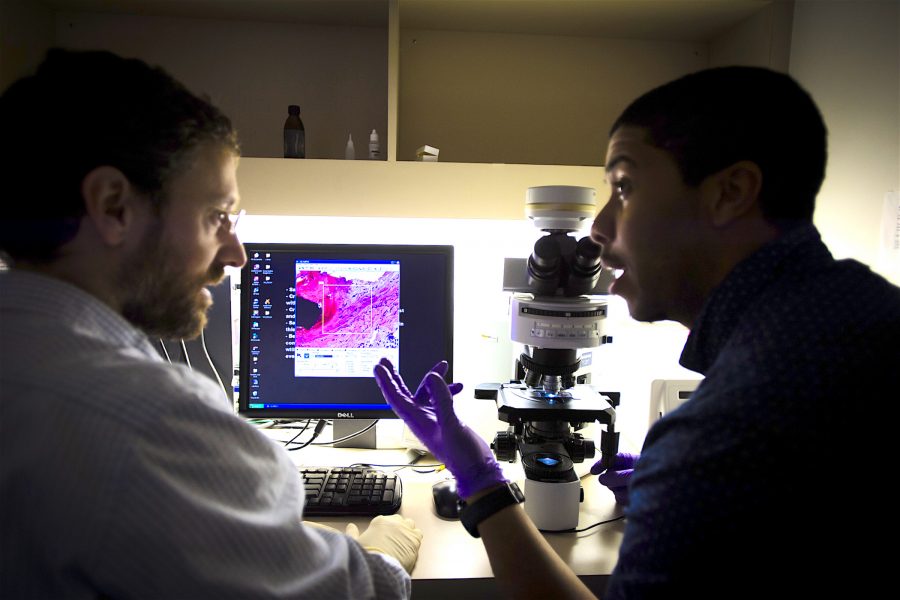
“Analyzing specimens with histochemical techniques is sort of like taking a picture of a huge party with lots of people,” says Guillory. “From that one picture we can figure out who is there (cell morphology), how they got there (tissue derived or cell migration), and why they came to the party (immune response, or injury response). We can also see from those pictures who is sick, (necrosis), as well as who has been there for a while (development of fibrous barrier).”
Guillory grew up in Houston, Texas. “I knew I wanted to pursue an advanced degree many years ago,” he says. “I was attracted to the idea of probing the unknown. I have always wanted to learn more about what has not been explored, and pursuing an advanced degree allowed me to do just that.”
In 2017, as a biomedical engineering doctoral student at Michigan Tech, Guillory won a prestigious National Science Foundation Graduate Research Fellowship. He used the funding to continue his research on degradable metals (zinc-based) for cardiovascular-stent applications. His coadvisors were Goldman and Jaroslaw Drelich, a distinguished professor in Michigan Tech’s Department of Materials Science and Engineering.
After postdoctoral studies at Northwestern University in Evanston, Illinois, Guillory returned to Michigan Tech as an assistant professor last spring.
“An unbelievable amount of data and studies have been done on multiple aspects of our project, but I can say what we have achieved thus far at Michigan Tech has never previously been done,” adds Guillory.
Prof. Guillory, how did you first get interested in engineering?
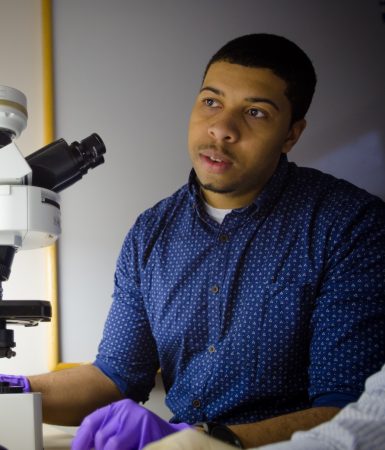
“I think I’ve always been this person who loves science. At my first Michigan Tech graduation, for my undergraduate degree, my mom pulled out a photo to show me. It was a picture of me at age 8 or 9, wearing a white lab coat and holding a clipboard. I wanted to be a scientist even then. In Houston, I attended a magnet school—a high school focused on STEM. One of the teachers urged us all to apply to Michigan Tech. She’d been to campus and thought it was a great place to study engineering. Well that day we all pretty much said, “Michigan??!? No way!” But then I decided to apply. I was up for the adventure, willing to take a risk.”
Any hobbies?
“I’m into cooking, savory things. I do a lot of grilling and smoking. I also play basketball at the SDC, often with Prof. Goldman. Last but not least, I love to fish. I go trout fishing, but honestly I’ll fish for anything. I’ll be going ice fishing this weekend.”
Prof. Goldman, How did you first get into engineering? What sparked your interest?
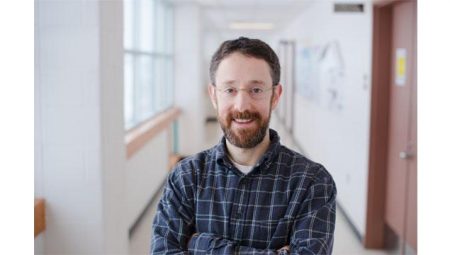
“All through high school I was set on becoming a medical doctor. In college, I took pre-med courses and volunteered at different hospitals. At that time, there were big changes happening in the healthcare industry. Some of the doctors I talked to actually encouraged me not to become a doctor. That’s when I started thinking about biomedical engineering. I liked math and technology, and it seemed like a good way to combine my interests. We didn’t have biomedical engineering at my undergraduate university, so I took as many related courses as I could in addition to my major, which was chemical engineering. Then, in graduate school for my PhD, I finally took my first class in biomedical engineering. Right away it connected deeply in me. That was when I knew: this is it. This is what I really want to do.”

What do you like to do in your spare time?
I like to play chess! I’ve been playing ever since I was a little kid. I played chess with my dad, and I played chess with my grandfather. When I was in second or third grade I started the school’s first chess club. And I was captain of the chess team in high school. Now, in the Covid age, I’m playing chess more than ever, including some amazing tournaments online. I also like running outside (even in the winter).